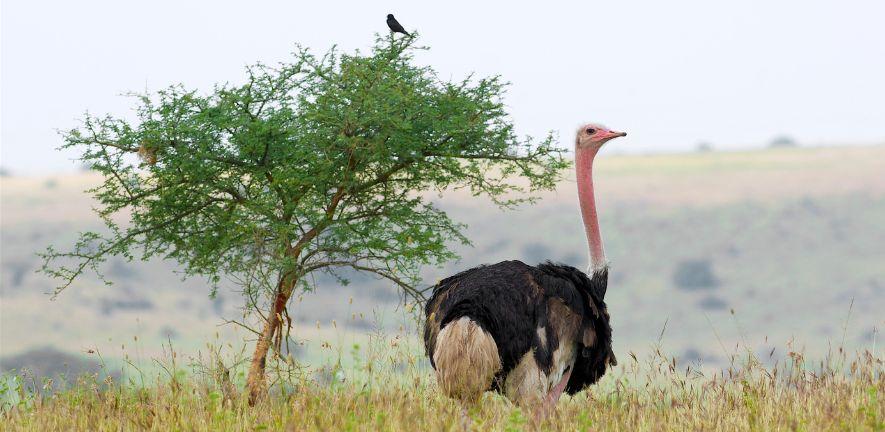
Submitted by Dr C.M. Martin-Jones on Mon, 06/10/2025 - 10:17
Flightless birds such as ostriches, emus, rheas, and kiwis inhabit far-flung corners of the Southern Hemisphere, but how did these grounded birds spread so far and wide? New research sheds light on the mystery, showing they had ancestors that could likely fly across oceans.
Researchers from the University of Cambridge and the Smithsonian National Museum of Natural History examined the fossilized bones of a prehistoric relative of modern flightless birds, finding that bones key to flight closely resembled those of long-distance flyers such as parrots and egrets.
The finding offers compelling evidence that flightless birds are descended from species likely capable of sustained flight, explaining how their modern counterparts dispersed across the southern continents.
Ostriches, emus and their relatives belong to a taxonomic group called Palaeognathae. Their ancestors evolved after the great southern landmass Gondwana broke up, leaving scientists puzzled as to the widespread dispersal of modern grounded birds. One theory suggests their ancestors could fly, though the fossil evidence needed to test this has been limited.
That changed when Klara Widrig, lead author of the new study and former PhD student in Cambridge’s Field Palaeobiology Research Group, undertook a graduate fellowship at the Smithsonian. There, she uncovered a remarkably well-preserved fossil of Lithornis promiscuus within the museum’s collections. Dating back 56 million years, this prehistoric bird was roughly the size of a great blue heron and belonged to the order Lithornithidae, early relatives of modern paleognaths.
“This is a really special fossil,” said Widrig. “Unlike a lot of bird fossils, which tend to be very delicate, this one has not been crushed. That, together with its geological age, make it very rare.” The fossil was collected in 1983 by Prof. Peter Houde of the Smithsonian Museum, who prepared the delicate skeleton carefully, preserving it for future scientific study.
Widrig, who is now a postdoctoral researcher at the Smithsonian, was interested in the fossil’s breastbone, which anchors the largest flight muscles and therefore provides useful information about flight capabilities. “I could see similarities between Lithornis’ breastbone and those of modern birds and wanted to investigate further.” said Widrig.
Using micro-CT scanning, she created digital models of the bird’s sternum and compared its shape and size to the breastbones of more than 150 species of living birds.
A digital scan of the fossilized sternum, credit: Klara Widrig.
Her analysis revealed striking similarities to the breastbones of several species of parrots, egrets, and flamingos. Modern species such as the great egret and grey parrot can continuously flap their wings and glide through the air. Some with similar breastbones, like egrets and herons, have even been documented flying across oceans.
Her discovery supports the idea that ancient paleognaths were capable of sustained flight, allowing them to colonize distant continents before evolving into the large, flightless forms we see today. Once settled, these birds adapted to ground-dwelling lifestyles, gradually losing their ability to fly.
One mystery still lingers: why did these birds lose the ability to fly? According to Widrig, two conditions are required, that they have no predators to escape from, and they can find all their food on the ground. “After the dinosaurs went extinct it took millions of years for mammalian predators to evolve, so there was a window of time where the two conditions were met on continents and not just islands.”
Read the paper:
Widrig, K., Alfieri, F., Kuo, P. C., James, H., & Field, D. J. (2025). Quantitative analysis of stem-palaeognath flight capabilities sheds light on ratite dispersal and flight loss. Biology Letters, 21(9), 20250320.
Read more on the Smithsonian blog:
How Did the Ostrich Cross the Ocean? Its Ancestors Flew There, Smithsonian Museum blog.
Feature image, credit Daniel Field.

